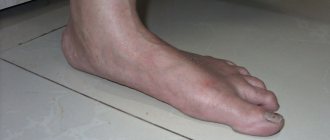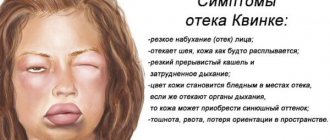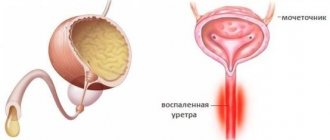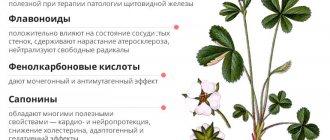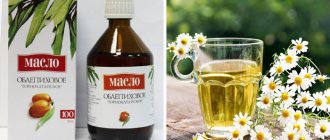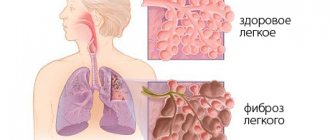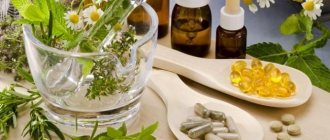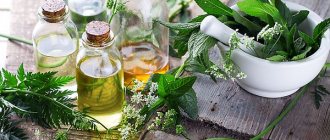It is possible to treat bronchitis at home in adults, the main thing to remember is that this disease is inflammatory in nature, accompanied by a strong expectorant cough, an increase in body temperature to 38–40 degrees, general weakness of the body, and sometimes tachycardia.
Related articles:
How to treat acute bronchitis at home We treat bronchitis at home in adults - effectively and quickly How does smoker's bronchitis manifest - symptoms and treatment Whether to visit a bathhouse if you have bronchitis or not: how to steam properly Treatment of bronchitis with mustard plasters
If not treated correctly, bronchitis can cause a number of complications that can affect the functioning of the respiratory system, cause hearing loss, and cause pain in the heart and stomach. That is why it is so important to complete a course of complete recovery of the body in a timely and effective manner!
Symptoms of bronchitis in adults
In adults, bronchitis is accompanied by the following symptoms:
- frequent dry cough that interferes with sleep;
- sore throat, sore throat, plaque;
- weakness, loss of appetite.
Many cases of bronchitis without fever have been recorded, in which general weakness, pallor of the body and face are noted. There may be a lack of appetite, a dry cough and sore throat. The manifestation of bronchitis without fever may indicate the presence of chronic diseases that worsen during this period.
You can focus on several symptoms of allergic bronchitis:
- closer to night the manifestation of a persistent cough;
- elevated temperature during exacerbation of the disease;
- when eating certain foods or contacting animals (depending on the cause of the disease), the cough worsens;
- runny nose, skin rash, conjunctivitis (in some cases);
- exhalation of air is accompanied by wheezing in the chest.
Ginger, onion and turmeric
Regular onions have the ability to treat ARVI, influenza and obstructive bronchitis. It also thins phlegm. Onions are not only eaten when sick, but also made into freshly squeezed juice. This juice is used in the morning, before meals, 1 tsp. For gastrointestinal diseases, onion juice is diluted with water in a ratio of 1:1 or 1:2.
Ginger tea
Ginger has a unique aroma and helps with many diseases. It softens dry cough and fights fever. Fresh ginger root has the greatest effect. But you can also use ginger powder. For tea, take 1 sliver of powder and pour 200 ml of boiling water or chopped fresh root.
Turmeric
It is believed that turmeric root powder significantly alleviates bronchitis and promotes rapid recovery. This seasoning is added to various dishes and drinks. For treatment, it is most effective to add 1 pinch of turmeric to 1 glass of warm milk. Drink this mixture 3 times a day before meals.
Signs of the disease
Bronchitis is divided into several types, each of them can be accompanied by fever or occur without it. Although, in general, they can be very similar to each other. Consider the signs of bronchitis without fever:
- the disease begins with a dry cough;
- discomfort appears in the throat;
- labored breathing;
- Sometimes sputum is released (colorless or with a gray-yellow tint).
Signs of bronchitis, which is accompanied by fever, are hoarse breathing, dry cough, fever lasts a long time, general weakness, fatigue.
When acute bronchitis occurs, the following symptoms appear:
- temperature rises to 39 degrees;
- the patient has chills and weakness;
- sweating;
- dry cough becomes wet;
- wheezing in the chest.
How long does it take to treat bronchitis in adults?
With proper treatment, bronchitis lasts no more than three weeks, although recently these periods have been lengthening. But other factors also play an important role: whether the patient started treatment in a timely manner, the correctness of the selection of medications, compliance with general recommendations (bed rest and drinking regime, room ventilation, getting rid of bad habits), how strong the person’s immune system is.
Bronchitis can occur without or with fever. If the mark on the thermometer significantly exceeds 36.6, this is quite normal. An elevated temperature indicates that the immune system is fighting the disease. Usually one week is enough to overcome the fever, as the temperature lasts for bronchitis. But in some cases, the disease is cured, but the temperature does not drop - you need to consult a doctor.
What is dangerous (consequences of bronchitis)
Complications of bronchitis in adults are the transition of the disease to a chronic and obstructive form, which lead to dangerous consequences. For adults, this disease poses less danger than for children. The main consequences of bronchitis:
- obstructive bronchitis;
- pulmonary obstruction;
- emphysema;
- bronchiolitis;
- respiratory failure;
- heart failure;
- pulmonary hypertension.
Important! Read more about the symptoms and treatment of obstructive bronchitis in our article.
If there is a residual cough, if it does not go away after an illness, it is recommended to consult a doctor. Such cases do occur; at home, for treatment they use drinking warm milk with the addition of soda and iodine or honey tincture with radish. If possible, after an illness you need to rest: go to a resort or sanatorium.
Symptoms of the disease
The onset of bronchitis with obstruction depends directly on the cause that caused inflammation of the mucous membranes of the bronchial tree.
Thus, with allergic and viral etiologies of the inflammatory process, acute processes develop. With the allergic nature of the disease, children develop a very rapid onset and increase in signs of bronchitis.
The slow onset of the disease is observed mainly in adults, and a chronic form of obstructive bronchitis often develops.
There is also a slow development and increase in all signs of the disease. Acute forms of bronchitis of viral origin are characterized by the following symptoms of the disease:
- the presence of intoxication of the body;
- [temperature] rises from low-grade to febrile, depending on the type of viral infectious agent;
- general weakness and malaise appears;
- fatigue develops quickly;
- headache;
- there may be pain in the joints and muscles;
- decreased appetite.
Important to know: The difference between obstructive bronchitis and bronchitis
Also, with a viral inflammatory process, there are signs of inflammation of neighboring organs:
- runny nose;
- redness of the mucous membranes of the throat;
- pain when swallowing.
Children may experience tearfulness, lethargy, and drowsiness. The immediate symptoms of bronchitis with obstruction include:
- cough;
- dyspnea.
The cough in the first days of the disease is unproductive and dry. There may be attacks of dry cough. Subsequently, a transition from a dry cough to a wet, productive cough is observed.
At the same time, with the viral nature of bronchitis, patients cough up mucous, light-colored sputum.
And with the bacterial nature of inflammation of the mucous membranes of the bronchial tree, sputum of a purulent nature is always released. Its purulent nature is indicated by its yellow-green color and viscous nature.
With allergic inflammation, a frequent dry cough of a paroxysmal nature begins abruptly. At the end of a coughing attack there may be a scant discharge of light mucus.
When [chronic obstructive bronchitis] develops, patients have virtually no symptoms at the onset of the disease, which is why it is observed that there is a late referral to specialists.
When the patient consults a specialist, changes in the lungs are already pronounced.
At the initial stage, adults experience a cough in the morning after waking up, and a meager amount of mucus is released. During the day, patients may have no symptoms at all.
As the obstructive component in the bronchi increases, the cough becomes more frequent and more mucus is released.
The chronic form of obstructive bronchitis occurs with periods of remission and exacerbations. Shortness of breath is expressed in the fact that it becomes difficult for patients to exhale fully. They experience an increase in the frequency of respiratory movements.
As signs of obstruction increase, a person exhibits signs of tissue hypoxia (lack of oxygen). Cyanosis appears around the mouth and distal extremities.
With the development of acute forms, children may experience signs of acute respiratory failure, which requires emergency assistance.
Important to know: Treatment methods for recurrent obstructive bronchitis
There is noisy wheezing breathing. Shortness of breath during a chronic process is observed in a person initially only with loads exceeding normal daily loads.
In the future, in the absence of treatment and without eliminating the harmful effects, the symptoms of shortness of breath increase and begin to occur during normal physical activity. In severe situations, shortness of breath also occurs at rest.
If the acute process is repeated frequently, bronchial asthma may form, especially in childhood. Complications such as:
- pneumonia;
- bronchiectasis.
Treatment of bronchitis with known methods
Basic therapy includes taking medications, traditional medicine and physiotherapy to warm up and expectorate mucus from the respiratory organs.
Is it possible to cure bronchitis without antibiotics?
People's condition with chronic bronchitis can be improved by folk remedies that will help get rid of cough, runny nose, fever, hoarseness in the throat, relieve spasms in the intestinal area, and normalize stool. The following treatment procedures can be effectively used at home:
- rubbing;
- compresses;
- inhalation;
- phytotherapy.
When treating bronchitis, many herbs provide support to the body and promote rapid recovery. If you read the composition of modern medicines for this disease, you can find various plant extracts, such as echinacea, eleuthero, ginseng, nettle decoction, licorice root tincture.
Such bacterial immunocorrectors include the drugs Bronchovaxom and Bronchomunal. They help cope with allergic bronchitis when strong allergens enter the body. We have already written about what other drugs can be used to treat bronchitis in adults.
But before spending money on expensive pharmaceutical drugs, it is worth trying to treat bronchitis in adults with folk remedies. To make an accurate diagnosis, you need to see a doctor and discuss traditional treatment methods!
Rubbing
For rubbing, camphor alcohol, essential oils, and turpentine ointment are used, which, when heated, help improve blood supply to the respiratory organs.
To reduce the temperature in acute bronchitis, you should wipe the patient with vinegar in a ratio of 1:5 to water. For diaphoretic effects, drink a lot of liquid, tea with raspberries, decoctions of sage, linden blossom, elderberry.
To improve the patient's overall well-being, you can do a light massage using fir or eucalyptus oils. The patient will breathe in the fumes, improving the functioning of the respiratory system.
Compresses
Using folk remedies, you can make effective warming compresses by applying boiled potatoes in their skins and burdock oil to the back and chest area. Keep it for 3-5 hours until the body’s condition improves.
After completing the procedure, the patient should drink a warm decoction based on chamomile, St. John's wort, bergenia root, licorice, and thyme. In addition to compresses, you can use cups, but not for acute bronchitis, with a large volume of sputum.
Inhalations for the treatment of bronchitis
The therapeutic effect of inhalations is very high; they can relieve prolonged bronchitis, when it is difficult for a person to remove mucus from the body. The main components of the procedure are antimicrobial and vasodilator agents.
The following types of inhalations exist:
- with the addition of essential oils;
- boiled potatoes with balms;
- grated garlic and onion.
The traditional method of treating bronchitis, inhalations, cannot be called expensive. Inhalations are recommended during exacerbation of the disease, as well as for prevention. Just perform such procedures carefully.
Important! You should completely avoid inhalations if you have problems with the heart, lungs, or high blood pressure.
You can do home inhalations over steam and over water. Such procedures are generally not suitable for children as a treatment, because they can cause burns to the delicate mucous membrane.
Inhalations can be performed over alkaline heated water, to which add a few drops of anise or eucalyptus oil. Do this procedure several times a day for three minutes.
ethnoscience
Obstructive bronchitis [treatment with folk remedies] includes the use of various [inhalations], infusions, and rubbing.
Important to know: Antibiotics for obstructive bronchitis - which ones to choose?
Infusions and decoctions
It is possible to use a decoction of the roots of spring primrose. It is prepared from one spoon of dry matter and one glass of boiled water. Take 15 ml up to four times a day.
Infusions of elecampane herb help the discharge of mucous discharge. It is imperative to observe all recommended proportions for preparing the infusion and strictly follow the doctor’s instructions.
You can prepare a mixture of onions and honey; it will also help remove mucus from the bronchi. This mixture is consumed 5 ml every 60 minutes. The duration of treatment can be up to one week.
Infusions of tangerine peel help with paroxysmal dry cough. Only dry tangerine zest is used for this. For preparation, you need 100 grams of dry matter and one liter of boiling water. The decoction is taken for three to five days.
A mixture of honey and viburnum is boiled with the addition of water, the resulting mixture is taken 5 ml three times for three days.
You can also use ready-made herbal breast infusions, which are sold in pharmacies. Strictly follow the preparation and administration instructions indicated on the boxes.
Rubbing
Rubbing the surface of the chest with badger fat and animal lard is used. Badger fat is rubbed on the chest and back.
In this case, it is necessary to avoid the heart area. After this, the patient is wrapped to keep warm. It is recommended to carry out the procedure in the evening before bedtime.
Animal internal fat is used in a similar way, which should initially be rendered.
Steam inhalations
Inhalations are performed for bronchitis:
- sea water;
- mineral water;
- essential oils;
- crushed potatoes;
- onions;
- garlic
In adults with bronchitis, it is possible to use all of the above-mentioned folk methods, you just need to first coordinate them with a specialist.
And in young children with bronchitis, inhalations using essential oils are not used, and not all herbal decoctions are used.
Consultation with a doctor is required before starting folk remedies for bronchitis. Effective treatment is achieved when various methods of treating bronchitis are used.
Folk remedies for the treatment of obstructive bronchitis
Thyme, as well as any essential oils based on this herb, help greatly with exacerbations. If bronchial obstruction occurs, then not only the folk doctor, but also the doctor from the clinic will recommend thyme as a soothing and analgesic herb. Patients say that using thyme makes it easier to breathe. Sputum is expectorated better, the mucous membrane is freed from unnecessary mucus.
Propolis
To treat bronchitis, propolis is used in different ways (it all depends on the form and symptoms of the disease). The tincture is recommended for adults with acute and chronic diseases:
- 10 g of crushed propolis pour 100 ml of medical alcohol;
- shake the bottle and put it in a dark place for 2 weeks;
- take 10 drops after meals.
For a chronic and protracted form of the disease, prepare a flatbread in this way: roll out the propolis and place it on your chest, carry out the procedure at night (in the absence of fever and inflammation).
Badger fat
Badger fat is useful for its composition of substances: polyunsaturated fatty acids, saturated fatty acids, vitamins A, B and E. It is worth noting that its use is contraindicated:
- children under three years old;
- in capsules - up to 12 years;
- with dysfunction of the liver and biliary tract;
- individual intolerance.
Treatment regimen for adults:
- the first 2 weeks for a patient over 30 kg, 1 tbsp. l. 3 times a day;
- the next 2 weeks - the same dosage 2 times a day.
Preschool children are treated according to the same scheme, changing the dosage (1 tbsp to 1 tsp). For children 3–6 years old, the amount of badger fat is reduced to 1/2 tsp, following the standard regimen.
What else will help against the disease in this form?
- Broth of Mother and Stepmother. The product has an expectorant and antipyretic effect. To brew, take two small spoons of the plant and pour in 0.2 liters of boiling water. Then simmer over low heat for a quarter of an hour, remove and leave for an hour. Take 50 ml three times a day before meals.
- Elecampane root. It is also used as an excellent expectorant in the treatment of bronchitis. You will need a small spoon of crushed dry root. Pour 0.2 liters of boiling water and place in a water bath for 10 minutes. Let the infusion cool, and you can take 50 ml, always before meals.
- Knotweed. When treating bronchitis using folk methods, the herb is recommended to relieve inflammation and as an expectorant. Pour two small spoons of chopped dry herbs into 250 ml of boiling water. Simmer in a water bath for 10 minutes, leave for several hours. Take a large spoonful after straining. You can take up to four spoons of infusion per day.
Rubs and compresses
To treat many colds in adults, including bronchitis, rubbing and compresses are used, which provide deep warming of the chest and give a very positive result.
Rub recipes
- You can treat a debilitating cough due to bronchitis with the following simple rubbing. You just need to melt the lard and add a little propolis tincture or camphor alcohol to it. Rub the resulting warm solution onto the patient’s back and chest using massage movements. As a result of such manipulations, blood circulation increases and the body warms up well. Then the patient needs to be wrapped in a warm blanket. This procedure helps to ease the discharge of sputum and speed up recovery.
- The following recipe for rubbing adults is quite effective. You need to mix 1 tbsp. l. castor oil and 1 tbsp. l. turpentine. Rub your feet with this solution and put on woolen socks.
- Treatment of cough due to bronchitis can be done using the following rub. You need to take 1.5 tbsp. l. pine oil and 100 ml melted butter. The ingredients should be mixed thoroughly, and the resulting mixture should be rubbed on the patient’s chest and back. Pine oil will give an expectorant effect, which will significantly alleviate the patient’s condition.
- Goose or badger fat will help cure bronchitis. To do this, apply a small amount of the product in a thin layer to the skin and rub it in thoroughly until completely absorbed.
When using rubs based on animal fats, the patient must be wrapped.
As practice shows, the above rubbings are highly effective in treating bronchitis.
Compresses
Compresses have an equally effective warming effect. Below are some recipes that are used in folk medicine to treat bronchitis.
- Alcohol compress. This compress not only warms the chest well, but also accelerates blood flow, which leads to faster recovery. Alcohol compress can only be used to treat adults. First, the breasts need to be lubricated with liquid honey. Then you should moisten a cotton cloth in a heated alcohol solution (alcohol is diluted with water in a 1:1 ratio) and place it on your chest. The compressed area must be wrapped in cellophane and covered with a warm blanket. Since the alcohol compress has an irritating effect, it should be applied for a short time - 30-40 minutes.
- Aloe compress. To prepare a compressor remedy for bronchitis, take an aloe leaf and grind it into a paste. Depending on the resulting mass, you need to take the same amount of honey and mix it with aloe. The resulting mixture should be heated in a water bath to 40C, then wrapped in a cotton napkin and applied to the patient’s chest. Cover the top with a warm blanket. The compress should remain on the chest until it cools completely.
- Cabbage leaf compress. This compress can be freely used to treat not only adults, but also children. To prepare the product, you need to take a cabbage leaf and make cuts on it with a knife so that the leaf becomes soft and lets out a little juice. 2 tbsp. l. Honey should be heated a little in a water bath and then spread over the cabbage leaf. After this, the cabbage leaf with the honey side should be placed on the patient’s chest and wrapped in a warm blanket.
Important to know: Symptoms of allergic bronchitis in adults
Thanks to the warming effect of compresses, the healing process is significantly accelerated.
Nutrition for bronchitis
The amount of calories consumed during bronchitis should be 2500 - 3000. It is recommended to include in the diet:
- fresh fruits and vegetables;
- boiled chicken, pork and veal meat;
- sea fish;
- dairy products;
- honey, drink more tea with raspberries and lemon;
- vegetable broths;
- porridge (rice, buckwheat, oatmeal - preferably milk-based).
- more liquid.
Eliminate sweets, chocolate products, baked goods, and salty foods from your diet. Also not recommended are foods containing cholesterol, fatty, spicy and smoked foods, alcohol, seasonings and drinks containing coffee and cocoa.
What vitamins will help?
Very good traditional medicine, for bronchitis in any form, refers to herbs that contain a lot of vitamin C. Pay attention to rose hips, which can be brewed and drunk as tea (but the temperature for brewing should be 70 degrees Celsius, so as not to kill the beneficial properties plants).
Also take additional nicotinic acid B3 to treat bronchitis. You can take it in tablet form, or eat more liver, fish, chicken, carrots and sprouted wheat grains. Chamomile, mint, nettle and parsley contain a lot of acid.
Therapeutic measures
As already mentioned, you cannot treat the disease yourself! Chronic bronchitis is treated at home in cases where the inflammatory process is not severe.
At the same time, treatment at home for bronchitis is carried out using both folk remedies and medications, and complex treatment is carried out.
Severe forms of the disease can only be treated in a therapeutic or pulmonological hospital. Before treating chronic bronchitis, it is necessary to find out the form and phase of the disease.
General recommendations
During the treatment period, general recommendations for bronchitis are prescribed, which patients should follow at home:
- plenty of drinking regime;
- bed rest during exacerbation of the disease;
- breathing exercises;
- balanced diet;
- vitamin therapy;
- humidifying the air with an ultrasonic humidifier, or containers with water, wet tissues.
To treat bacterial inflammation of bronchitis at home, a course of treatment with antimicrobial agents is required.
Antibiotics
The following drugs with antimicrobial action are used for bronchitis:
- Amoxiclav;
- Panclave;
- Sumamed;
- Azitrox;
- Ceftriaxone;
- Cefixime.
For treatment, a course of medications is taken for at least ten days; if the full course of therapy is not completed, complete recovery will not occur. It is possible to cure bronchitis at home by adding folk remedies.
Decoctions and infusions
You can treat the disease (bronchitis) with some folk remedies in the form of decoctions and infusions:
To relieve a severe cough attack during bronchitis, fox plantain, clover, elecampane, mint with the addition of fir oil are used.
Onion decoction also helps in relieving severe cough. Grated apples are mixed with honey and stirred, the finished mixture is consumed 15 ml three to four times during the day.
Treatment of chronic bronchitis with folk remedies involves the use of a decoction of licorice root, with the addition of linden blossom, which helps thin the sputum and, at the same time, facilitates its discharge.
Coltsfoot, cuckoo adonis, yarrow, and meadow clover are used to prepare a decoction from this mixture. You should also drink the decoction every day before meals, four times a day.
Important to know: Drug treatment for exacerbation of chronic bronchitis
Nut milk is prepared from pine nuts by adding cow's milk. Drink this milk in the morning and before bed.
An infusion of wheat grains has a general strengthening, mucolytic, anti-inflammatory effect in bronchitis.
A mixture of viburnum (150g) with honey (100g) is boiled for five minutes and consumed 5 ml four times a day.
Tea with honey and meadow clover has an expectorant effect for bronchitis.
Some folk remedies help cure obstructive forms of bronchitis at home:
- A decoction of a mixture of coltsfoot (5g), chamomile flowers (2g), Baikal skullcap (5g), duckweed (5g). Pour one glass of boiling water and leave for about seven hours. For bronchitis you need to take 30 ml five times a day.
- Tricolor violet (5g), sweet clover (10g), large plantain (10g), horsetail (3g) are also poured into a glass of boiling water and taken for bronchitis, 30 ml five to six times a day.
Steam inhalations
You can treat bronchitis with inhalations using the following means:
- boiled potatoes;
- mineral water;
- essential oils;
- pine buds;
- herbal decoctions;
- onion gruel;
- chopped garlic.
Treating bronchitis with steam inhalations can only be done using freshly prepared products and provided that the patient does not have a high fever.
Nebulizer inhalations can treat bronchitis in all forms of bronchial inflammation; there are medicinal solutions and folk remedies for them.
Effective rubbing
For rubbing for bronchitis the following are used:
- A mixture of turpentine and castor oil (1:10).
- Pork or goose fat.
- Goat fat.
- Badger fat.
Warming compresses
You can treat bronchitis using compresses:
- Honey compress.
- Aloe leaf compress.
- Compress made from boiled and chopped potatoes.
After rubbing and applying compresses for bronchitis, patients should be wrapped in warm cloth and blankets.
Rubbing and compresses are contraindicated for bronchitis in the following situations:
- cardiovascular pathologies;
- high body temperature (more than 38 °C);
- liver diseases;
- with caution in the presence of diabetes mellitus.
Any form of bronchitis can be treated at home (even during periods of exacerbation of bronchitis, even during periods of remission of bronchitis) only under the supervision of a specialist.
Therapeutic exercises for bronchitis
The patient should not spend a long time in bed, as various complications may develop, including heart failure and pneumonia. It is necessary to do simple breathing exercises.
The complex includes:
- imitation of “chopping wood” by hand;
- circular rotations with hands;
- tilting the body in different directions;
- deep breath and slow exhalation;
- easy walking in place.
You shouldn’t overwork yourself, but you should always keep your body in excellent physical shape, of course, unless you have a high temperature and other contraindications to physical exercises.
Diagnosis of the disease
To establish a diagnosis, you must consult a local physician or pulmonologist.
The history of the development of the disease must be clarified, the presence of bad habits, place of work, and the presence of occupational hazards are clarified.
When examining a patient, a specialist can detect characteristic signs of an inflammatory process in the mucous membranes of the bronchi:
- hard breathing over the lungs;
- the presence of dry or wet wheezing wheezing, depending on the form of the process;
- presence of cyanotic coloration of the skin;
- increased respiratory rate (shortness of breath).
Instrumental research methods are also required:
- X-ray examination of the lungs (deformation and strengthening of the pulmonary pattern);
- sputum analysis to isolate the pathogen and determine the type of antibiotics, determine the presence of signs of purulence of the process;
- if there is little sputum, then the bronchial lavage water is examined;
- Be sure to evaluate the function of external respiration, it helps to identify the obstructive component and a decrease in tidal volumes.
Important to know: Chronic bronchitis: contagious or not
For laboratory diagnostics the following is carried out:
- assessment of blood gas composition;
- pulse oximetry;
- acid-base composition of blood;
- immunological studies;
- inflammatory proteins.
Medicines for treatment
Ceftriaxone
Ceftriaxone is an antibiotic that belongs to the cephalosporin family. The third generation drug is often used for bronchitis. Ceftriaxone is used to treat adults and children. In the standard regimen, the drug is administered intramuscularly:
- adults - no more than 2 g per day;
- for children - the dosage varies depending on body weight.
Contraindicated in case of an allergic reaction to the drug. Side effects can be caused by improper use of the antibiotic: nausea, vomiting, allergies, jaundice, problems with blood clotting.
Sumamed
Sumamed is a drug from the macrolide group, is well absorbed by the gastrointestinal tract and is tolerated by the patient's body. The antibiotic is taken for three days, 500 mg at a time (1 hour before a meal or 2 hours after a meal). Before prescribing the drug, a sputum test is performed to determine the sensitivity of bacteria.
Amoxiclav
The antibiotic Amoxiclav is prescribed for the treatment of bronchitis when certain bacteria are detected: streptococci, echinococci, listeria, shigella, moraxella, bortadella, gardnerella, klebsiella. The dosage is determined by the doctor based on body weight:
- mild to moderate severity of the disease (1 tablet 500/125 mg) twice a day;
- severe form of bronchitis (1 tablet 850/125 mg) 2 times a day.
Azithromycin
If the disease is provoked by: pneumococcus, Haemophilus influenzae, Maroxella, mycoplasma, chlamydia, legionella, Azithromycin is prescribed. This is an antibiotic of the macrolide group; the course of treatment with this drug should not exceed 5 days. Antibiotic regimen for bronchitis.
- Adults: Day 1 - single dose 500 mg; from days II to V - 1 time per day 250 mg.
- Children: Day I - daily dose of 10 mg per 1 kg of weight at a time; Days II–V - 1 time per day, 5 mg per 10 kg of weight.
For better action, Azithromycin is recommended to be used in parallel with antimicrobial drugs and immunomodulators.
Flemoxin
Flemoxin, like all antibiotics, is taken as prescribed by a doctor. The drug is used for the treatment of bronchitis with:
- elevated temperature (above 38 degrees for three days);
- intoxication of the body;
- breathing problems;
- leukocytosis;
- leukoformula shifted to the left;
- The causative agents were staphylococcus, streptococcus, pneumococcus, and Moraxela catarrhalis.
Often the medicine is used for chronic bronchitis. The dosage is selected individually for each patient, taking into account age, stage of the disease and the presence of chronic diseases.
Nebulizer
When using a nebulizer during bronchitis, the following drugs are used:
- Berotek, Atrovent (bronchodilators);
- Lazolvan (to liquefy and remove mucus);
- Furacilin (antiseptic);
- Pulmicort (hormonal drugs);
- Rotokan (vegetable).
It is also recommended to use mineral waters: Borjomi, Essentuki, Nabeglavi.
Collection of expectorant herbs
This remedy is useful when it is difficult to clear sputum when coughing, even if the cough is wet. You can buy a ready-made herbal mixture at a pharmacy, or you can prepare the collection yourself, taking care of the necessary components in advance:
- Dill
- Coltsfoot
- Fennel
- Sage
- Althea
Each of the components should be taken in the amount of ½ tsp. and brew in a thermos, pour boiling water over it. The thermos is sealed and left for two or three hours. Next, the mixture is filtered before consumption. You can add 1-3 tablespoons of honey there for taste, completely dissolving it in the broth. The course of treatment is five days. Take 3 times a day, 100 milliliters. For the treatment of bronchitis, a folk remedy such as knotweed (herb), which has an expectorant effect and also an anti-inflammatory effect, is recommended.
The herb is used as a decoction or as a component of antitussive herbal preparations. During the summer season, it is good to use fresh knotweed juice, taking it in the form of drops (maximum 20) 3 times a day. For highly progressive bronchitis, it is important to use a mixture of herbs that enhance each other’s properties. Knotweed can be combined with coltsfoot or black elderberry flowers.
The components can be used not only in dry form, but also as juices or powder. Decoctions, juices or drops are given to the patient 3 times a day. The dose depends on the severity of bronchitis and the age of the sick person. Adults take the prepared decoction in the amount of 1 tbsp per dose. The juice is given to the patient 20 drops. Knotweed is also available in tablet form. The drug based on knotweed is known as a medicine called Avicularin. Before taking, consider contraindications and personal intolerance to the components of the product. You need to take one or two tablets three times a day.
Psychological attitude
In the treatment of any disease, positive thoughts and a humorous attitude will help you get better faster, and faith in a speedy recovery will lift even the most seriously ill people to their feet. After all, it gives the brain a strong boost to fight viruses and other ailments.
What do we have to do? Read positive books, meditate, recite well-known affirmations for healing the soul and body, smile, be in a great mood, do not lose heart. The disease will pass very soon, and then interesting, exciting and happy days will await you. Take care of yourself and keep your body in fighting spirit!
Disease prevention
To prevent bronchitis, you need to avoid getting too cold and wear clothes that are appropriate for the weather conditions. If you have bad habits (smoking), it is recommended to quit. Perform breathing exercises (inflate balloons), ventilate the room more often and do wet cleaning.
Bath
The bath is an excellent way to prevent bronchitis or restore strength after suffering a chronic form of the disease. You can go and take a steam bath after seven days after bronchitis, but not for everyone. It is forbidden to visit the bathhouse if the body temperature is above 37 degrees, if shortness of breath occurs during physical activity, if the pulse is above 90 beats/s, or if the blood pressure is above 140/90.
These are the main methods of treatment. Before you decide to try any remedy, we strongly recommend talking to your doctor. Yes, traditional treatment is effective, but self-medication often leads to dire consequences.
The most effective folk remedies for coughs
How to get rid of a cough? There is a huge arsenal of folk remedies that help defeat the disease. An important condition for the effectiveness of their use is to determine the characteristics of the disease. The cough can be morning, night, dry, with sputum, constant or intermittent. In addition, when choosing a remedy, it is necessary to take into account the age of the patient. The approach to treating infants requires special attention. Let's look at effective folk remedies for severe cough, bronchitis and tracheitis:
For adults
How to quickly cure an adult? Folk remedies for cough, acute bronchitis and tracheitis in adults include decoctions, infusions from plant materials, applications and inhalations. Chronic bronchitis treatment with folk remedies:
- Goose fat for oral administration. Helps cure dry, scratchy cough. The main effect of goose fat is to liquefy mucus and remove it from the lungs. To make the drug, poultry fat is used, which is melted by overcooking. To cure a prolonged cough, drink one tablespoon of fat in the morning on an empty stomach. Relief occurs on the second day. It is possible to completely get rid of a prolonged cough within 7 days of treatment with fat.
- Milk, honey, onion and garlic. A decoction prepared with these ingredients helps with a strong wet cough and relieves wheezing. To get the medicine, take half a liter of milk, boil three pre-chopped onions and a head of garlic in it for 10 minutes. After this, let it cool slightly and pour the entire contents into a blender, where it is ground to a pulp. Then add a couple of tablespoons of honey, preferably linden honey. Drink this cough medicine at least 5 times a day after warming it up a little. Relief occurs after the first dose.
- Bogorodskaya herb (thyme). This aromatic plant helps with chronic dry cough, including smoker's cough. A very good expectorant folk remedy. A decoction is prepared from 250 ml of water and one tablespoon of dry herbs. The herb is added to cold water, brought to a boil and simmered for 5 minutes. The broth must be filtered. Adults drink the product warm instead of tea. Children are given 1/3 glass in the morning and evening. Taking a cough decoction will thin the mucus, which helps cleanse the lungs even of tobacco products. You need to take the medicine for at least two weeks.
- Potato. This vegetable is used to make an effective application that helps to cope with an old cough. To do this, take 2-3 potatoes, peel them and boil them. Without allowing it to cool, knead the finished potatoes and place them in a plastic bag. A cotton napkin is placed on the patient’s back, on top of which a bag of puree is placed. It is necessary to check whether the compress is too hot before applying it. Cover with a blanket on top. Keep the cough application until the potatoes have cooled.
For children
A child's cough is more difficult to cure, if only because it is more difficult to clear the airways of mucus. But there are a number of folk remedies that treat even a persistent cough in a child. Dr. Komarovsky suggests easing it by thinning the sputum. For this purpose, the doctor recommends using folk remedies to treat cough in children. Among them, the following methods stand out for their effectiveness and ease of use:
- Eggs, milk, honey. Using these ingredients, a sweet mixture is prepared that will quickly cure a mild cough. To prepare the product, take a glass of boiled milk, add 30 g of honey and butter. Separately, beat the egg yolk and add it to the milk. It is better to take this medicine at night.
- Onions, sugar. A sweet syrup made from these ingredients relieves severe coughs. For it you need 2 onions, a liter of water and a glass of sugar. The washed onions are dipped into boiling water with sugar dissolved in it and simmered for about an hour. Then the syrup is drained. Children are given one tablespoon of warm medicine every three to four hours.
- Honey, cabbage. These products are used to make a cough application on the chest. The product is very effective, relief occurs the next day after the first procedure. To prepare, you will need one cabbage leaf and a couple of spoons of honey. The leaf is smeared with honey and applied to the chest. The cough application is kept on all night. In the morning, remove the cabbage leaf that has become limp. Honey is completely absorbed into the patient's skin. Before using folk remedies for cough, bronchitis and tracheitis, it is necessary to measure the temperature; if it is above 37.5 degrees, it is better to postpone the procedure.
- Homemade beef liver pate
- How and with what to treat prostatitis in men with signs of the disease
- What does scabies look like?


